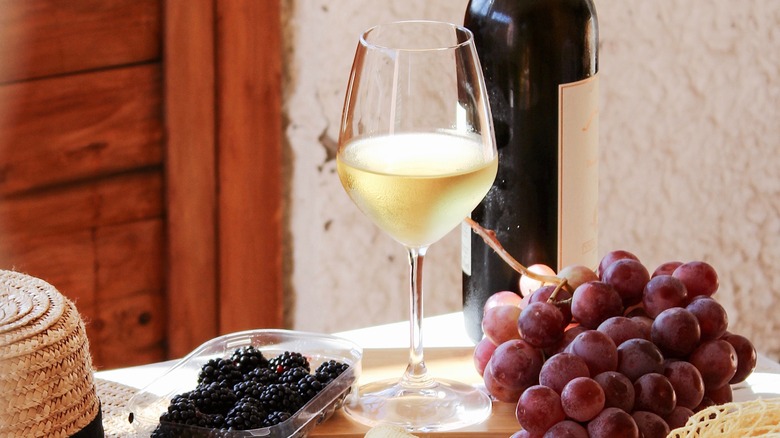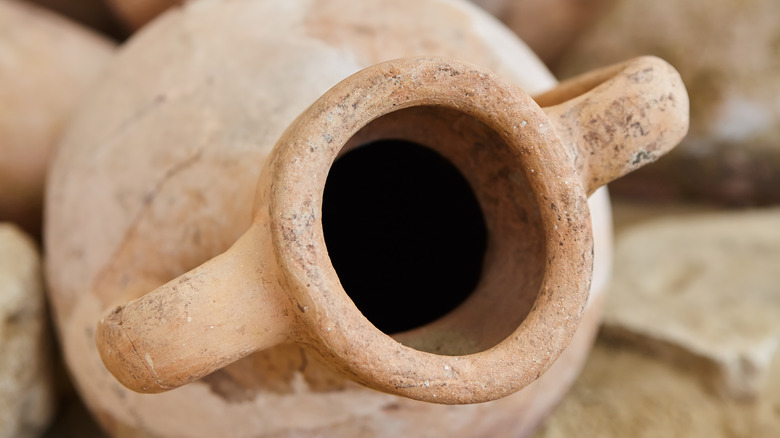How A Cave Discovery Changed What We Know About Sicily's Winemaking History
Our ancestors likely found grapes delicious but imagine when they realized that fermenting them would lead to an even better (and boozier) delight! For years, winemaking has been a central aspect of Italy's rich enogastronomic identity, but its exact origins were relatively unknown — that is, until a cave discovery in the south of Sicily changed our understanding of Italy's winemaking history.
Boasting constant sunshine, coastal breezes, and rich volcanic soil, the Sicilian landscape is favorable for viticulture (via Wine Enthusiast). Known mainly for grapes like Nero d'Avola and Grillo, Forbes explains that the island is home to over 70 varietals that currently span over 98,000 hectares.
While production has increased in the modern age, winemaking wasn't thriving back in the day. Grapevines made up a significant amount of the local flora and fauna on the island long before the Phoenicians and Greeks introduced wine cultivation practices to Sicilians, notes Sicilia DOC Consorzio di Tutela Vini. But how can we be sure that ancient Sicilians were actually making wine and not just growing grapes?
Wine stained pottery proves winemaking began 6,000 years earlier
When it comes to the origins of alcoholic beverages, Scientific American reports that fermented Chinese rice and honey beverages date back 9,000 years, while wine is said to date back 7,400 years, with origins in Iran. When it comes to our understanding of viticulture in Italy, historians previously believed winemaking started in Sardinia during the 12th century B.C. — that is, until The Guardian reported the presence of trace wine residues in terracotta pottery in Agrigento on Sicily's southwest coast, pushing the date back by three millennia!
According to CNN, the samples were tested by an international team of researchers from the University of South Florida. They were found to contain tartaric acid and sodium salt — two substances present in winemaking. Interestingly, these wine residues can provide insights into the prominence of wine in the Sicilian diet, its use in Mediterranean trade, and even its purpose within religious offerings, notes The Conversation.
While it probably didn't taste like modern-day Frappato or the amber-colored fortified Marsala wine, the earliest Sicilians sparked an interest in a wine culture that spread rapidly through the country in the following centuries.

